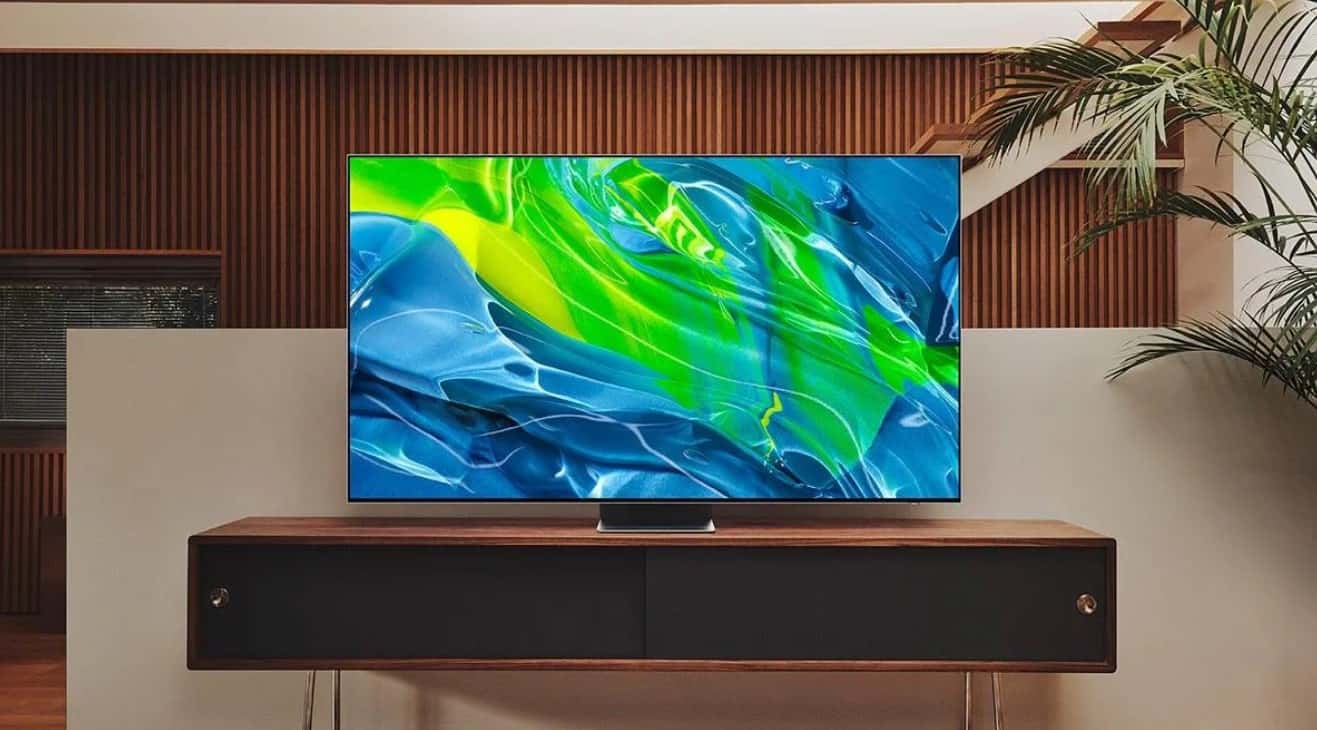Samsung announced the pre-order availability of several flagship TV models shown at CES 2022 earlier this year, but buried at the bottom of its press release were three words that immediately caught my attention: Samsung OLED TV.
The writeup was rather vague, but after some back and forth, the company confirmed that the Samsung OLED TV (S95B) uses the hugely anticipated QD-OLED screen technology. The naming will likely cause confusion but the idea seems to be that OLED is already a household name, and now Samsung wants people to associate it with its brand, not the Korean rival who has dominated the OLED TV space in recent years.
QD-OLED combines the best of Quantum Dot with the best of OLED to create infinite contrast ratios, perfect black levels, and high brightness levels. You can learn more about the technology in our QD-OLED guide but the short version is that quantum dots sit on a separate layer in front of an OLED one and emit blue light to illuminate pixels that contain red and green quantum dots. Each pixel is essentially converted into three subpixels, covering red, green, and blue, which can be combined to create true white light.
Though it breaks new ground for Samsung, the Samsung OLED TV isn’t the first device with QD-OLED tech. Sony unveiled at CES 2022 its Bravia A95K which also uses QD-OLED and Alienware released a monitor with the same panel tech. It is rather unusual for Samsung to be so coy about what could be one of its most important releases of the year. Whatever the case for that, this is big news for the TV industry.
Now, back to the TV itself. Samsung OLED uses the same Neural Quantum Processor found in the Neo 8K for optimizing upscaled images. It runs on Tizen, an easy-to-navigate proprietary TV OS found on most Samsung sets. The company is also touting the OLED TV’s sound quality, which supports Object Tracking Sound and Dolby Atmos for a surround sound effect and Q-Sympathy for playing audio through your TV and soundbar simultaneously.
Of note is an “OLED brightness booster.” Samsung didn’t provide brightness ratings, but this feature sounds encouraging. One downside of OLED panels is that they don’t get as bright as backlit panels–a flaw QD-OLED should resolve. The new hybrid technology isn’t the only thing that could make you consider upgrading your current TV as the Samsung OLED also supports HDR10+ and has a 120Hz refresh rate.
As for the design, Samsung is calling it “LaserSlim” because it is as thin as a laser beam…I guess? Anyway, the TV does look extremely thin (1.6 inches without the stand) based on the photos Samsung provided. On the rear are four HDMI ports all of which support 4K at 120Hz, which could make this a good option for gaming.
The Samsung OLED S95B is available for pre-order today in 55-inch and 65-inch sizes, with prices set at $2,399 and $3,499, respectively. Sony’s versions come in the same sizes but pricing has yet to be released.

